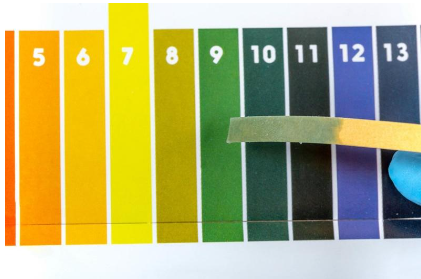As the world’s population grows and climate change messes with how plants grow, scientists are diving deep into ways to make plants healthier and help them grow better. They’re all about finding new ways to get nutrients and fertilizers to plants, especially through their leaves because that’s where they first meet the world.

Figuring out how this tiny nutrient-to-leaf connection works, especially in nano-agriculture, is super important. It’s like a secret path for plants to soak up all the good stuff they need. Scientists want to make this leaf pathway even better by understanding all its ins and outs. Knowing this stuff doesn’t just help plants grow stronger, it also means we can farm in more eco-friendly ways. This hunt for cool new tricks is one important aspect of nanoparticle research at the Connecticut Agricultural Experiment Station, where I work in collaboration with the Center for Sustainable Nanotechnology (CSN).

At the heart of what we do in our nanoparticle research at the Connecticut Agricultural Experiment Station (CAES) is the mission to make crops tough enough to handle whatever comes their way in farming. We’re all about coming up with new, clever ways to deal with problems in our nanoparticle research. When nanotechnology is used to improve agricultural practices, it’s called nano-agriculture. We’ve put a lot of brainpower into looking at how different tiny particles can help plants grow better. Our research pays attention to things like the size of the particles, how they’re coated, how many there are, and what they look like. You can read more about some of this work in my colleague Yu Shen’s blog post.
While scientists are getting more and more excited about nano-agriculture, we’re not just stopping at picking out which tiny particles help plants. We’re going deeper, trying to understand how it all works and finding ways to control it better. Studies I’ve worked on with my collaborator Chuanxin are shedding light on how our research is evolving in this direction. For example, we have been studying how the properties of nanomaterials (such as size, surface charge, etc.) affect the absorption of these nanomaterials by plants.

That leaf connection where plants meet the world is super important. It’s like a hotspot for how plants and everything around them interact. Knowing the chemistry and tiny details of how leaf surfaces work is huge. It’s not just about understanding how nano-stuff affects plants; it’s also about knowing how these tiny things impact the environment and making farming smarter.
One aspect of leaf surface chemistry that is a big deal is pH levels, especially for small metal particles. You might be familiar with pH if you’ve ever used litmus paper to measure how acidic or basic something is. Plant studies tell us that the pH on leaf surfaces changes a lot, even in the same plant but at different times or spots. Sadly, the way we’ve been measuring pH since the ’90s isn’t good enough for our cool modern research.

Knowing how important it is to measure leaf surface pH in a better way, CAES is making this a big deal in our research. Leaves are like the frontline for plants dealing with chemicals and stuff in farming. Figuring out how pH affects these nanoparticle fertilizers or pesticides could be a game-changer for making new materials in the future. This research works hand-in-hand with what CSN is doing, looking closely at the tiny chemistry happening on leaves and inside them, all to understand how materials work and what they do.
Sure, it’s tough, because of how tiny it is, the changing microenvironments, and the dynamic nature of the whole thing. But we’re confident we’ll crack the code and find a good way to measure leaf surface pH at the teeny-tiny scale. This research isn’t just about farming; it’s got its eyes set on the bigger picture, like helping the environment and making better materials. The teamwork between CAES and CSN is driving forward all these new ideas for nano-agriculture, putting us right at the front of the line for awesome solutions in this super important area.
REFERENCES
- Jaya Borgatta, Yu Shen, Carlos Tamez, Curtis Green, Jenny K. Hedlund Orbeck, Meghan S. Cahill, Connor Protter, Chaoyi Deng, Yi Wang, Wade Elmer, Jason C. White, and Robert J. Hamers Influence of CuO Nanoparticle Aspect Ratio and Surface Charge on Disease Suppression in Tomato (Solanum lycopersicum) Journal of Agricultural and Food Chemistry 2023 71 (25), 9644-9655. DOI: 10.1021/acs.jafc.2c09153
